#Hemlock woolly adelgid
Explore tagged Tumblr posts
Text
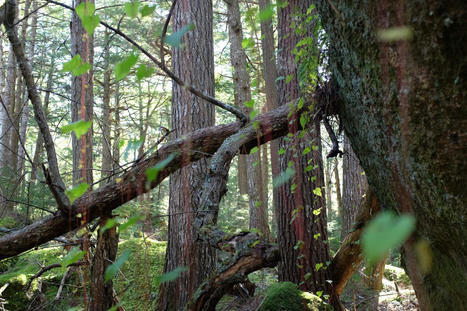
Combatting Hemlock Woolly Adelgid Infestations with NS Tree Preservation Co.
Discover the expert solutions of NS Tree Preservation Co. in safeguarding your hemlock trees from the destructive Hemlock Woolly Adelgid. Our experienced arborists employ advanced techniques to assess, treat, and prevent infestations, ensuring the health and longevity of your precious hemlocks. Trust us to preserve the beauty and vitality of your landscape with our specialized Hemlock Woolly Adelgid control services. Contact Us: 9028757686 | [email protected]
0 notes
Text
The Hemlock Woolly Adelgid: Spotlight on an Invasive Species of Pennsylvania
In the fourth installment of our series on invasive species of insects, we will discuss the hemlock woolly adelgid. The hemlock woolly adelgid (HWA, or adelges tsugae) is a tiny, sap-sucking insect native to East Asia. Recognized as an invasive species in the United States, the pest has been identified in multiple states and was found in Pennsylvania in the late 1960s. The HWA is a significant threat to eastern hemlock trees, the state tree of Pennsylvania.
As plant health care professionals, we want to help you and other Pennsylvania residents understand the impact of this invasive pest and keep your hemlock trees safe. Below, we discuss the characteristics, life cycle, damage and treatment of hemlock woolly adelgid in Pennsylvania.

Identifying the Hemlock Woolly Adelgid
Adelgids are a small family of insects closely related to aphids that feed on the plant sap of conifer trees and, in the hemlock woolly adelgid’s case, hemlock and spruce trees. The insect measures less than 1/16 inch (1.5mm) and is covered in a wool-like wax filament, giving the pest a “cottony” appearance. Females are black, oval, soft-bodied, and about 1.5 mm long. HWA is primarily found on the underside of hemlocks’ branches, nestled against the base of the needles.
The Life Cycle of the HWA
The hemlock woolly adelgid possesses an intricate two-year life cycle, encompassing four immature stages and culminating in a reproductive adult phase. Throughout late winter and early spring, as temperatures climb, adult female HWAs begin laying eggs. These clusters of eggs, housed within white filamentous wax masses, continue to be laid until June. Measuring 0.25 mm in length and 0.15 mm in width, the oblong eggs have a brownish-orange color. Depending on the warmth of the spring season, hatching starts in early April and typically concludes by the end of June. Emerging as reddish-brown nymphs, or “crawlers,” these young insects display a delicate white fringe near their anterior. Once settled, crawlers grow to approximately 0.3 mm long, and take on a black hue with a white fringe that encircles their bodies and extends along their dorsal side. As these nymphs develop, their color deepens to a dark reddish-brown, and their size progressively increases due to active feeding habits. By late September, these mature female insects reside on trees, overwintering before repeating the reproductive process of the species.
Recognizing an Infestation
The most apparent sign of HWA infestation is the white, “cottony” egg sacs on the underside of hemlock branches that the females produce when laying eggs. These egg sacs look much like the tip of a cotton swab and typically persist even after the insects are dead. Other signs include needle loss, reduced twig growth, and dieback of branches.
Damage Caused by Hemlock Woolly Adelgid
The impact of an HWA infestation on eastern hemlock trees can be catastrophic to the tree, depending on the extent of the infestation. The adelgids use sharp, syringe-like mouthparts, or stylets, to siphon off essential plant fluids from host plants. This feeding activity takes a toll on the plant’s overall health. A moderate population of the hemlock woolly adelgid may lead to a noticeable decline in the health and vigor of your trees. However, the consequences become more serious in a severe infestation. This could result in a premature shedding of needles, diminished growth of twigs, significant dieback, and in worst cases, the loss of the tree. This danger to the trees makes early detection and decisive action in managing these unwelcome pests important.
Managing & Controlling Hemlock Woolly Adelgid
We are often asked to manage this pest in late September through October. We use several methods for managing infestations of hemlock woolly adelgid.
Insecticides
Registered systemic insecticides applied in late September and October can reduce hemlock woolly adelgid populations and temporarily prevent the establishment of new infestations for up to seven years. These systemic insecticides are usually injected into tree trunks or applied as a soil drench or injection. These insecticides often target overwintering females. A plant health care expert can also apply sprays during other times of the year. A mid-to-late June spray may help reduce the number of developing nymphs. This management strategy is appropriate when thorough coverage is difficult to achieve using ground application equipment. Early spring soil injections usually work well against this pest when the soil is sufficiently irrigated.
Biological Control
Predatory insects can also be used to control HWA populations. The species most commonly used for this application are Laricobius nigrinus, a beetle native to the western United States, and Sasajiscymnus tsugae, a beetle native to Japan. Both beetle species are attracted to the white woolly egg masses that HWA produces. In addition, the beetles feed on the HWA, and their larvae also feed on the pest. While most often used in forests, this method is becoming more common for residential hemlock trees in the United States. This is because biological controls to remove species of harmful pests can be a more environmentally friendly method of control than using chemicals. As with insecticides, a qualified arborist should perform this treatment. A certified arborist can help you assess the severity of the infestation and recommend the best course of action.
Contact Burkholder PHC for Hemlock Woolly Adelgid Treatment in Your Landscape
If you suspect or are concerned about the presence of hemlock woolly adelgid on your property, contact Burkholder PHC for expert advice and treatment options. We provide a free evaluation by our highly experienced, qualified plant health care experts and certified arborists to help remove and control invasive species and the adverse effects these pests cause. Contact Burkholder PHC today for a free consultation.
Blog is originally published at: https://www.burkholderphc.com/the-hemlock-woolly-adelgid-spotlight-on-an-invasive-species-of-pennsylvania/
It is republished with the permission from the author.
0 notes
Text

Hemlock woolly adelgid
#forest#nature#beauty#photographers on tumblr#artists on tumblr#original photographers#original photography#photography#aesthetic#Washington#pnw#westcoastbestcoast#art#vsco#pacific northwest#explore#travel#cottagecore#naturecore#grandmacore#p
318 notes
·
View notes
Text



Our final stop was the Joyce Kilmer Memorial Forest, a protected tract of old growth and some of the biggest trees I have ever seen in person. We were trying to figure out why so much of the old growth was sadly dead, disproportionately so in comparison to just regular deadfall, so I did some digging and it is.. unfortunately mostly more dead eastern hemlock, killed by the woolly adelgid.
Regardless, the forest was still a beautiful hike and I could have laid down in all the ferns and mushrooms and just never got back up. Just leave me. It's fine. It's a spot I would definitely like to return to though. I also got back in my default comfort zone with macro photography (coming soon).
21 notes
·
View notes
Text
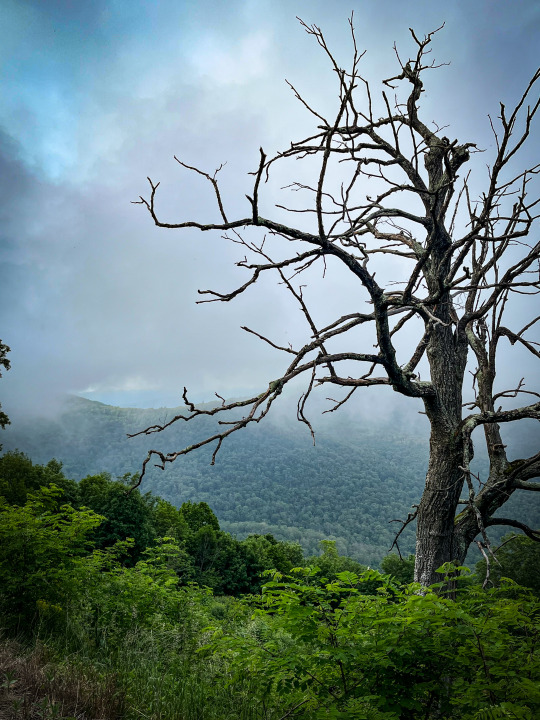
Hemlock Springs Overlook - Shenandoah National Park - June 2022
Nearly all of the Eastern Hemlocks in Shenandoah National Park were killed by an invasive pest called the hemlock woolly adelgid. This is one of the victims.
13 notes
·
View notes
Note
random OC ask (for siobhan): if your OC was in a modern!AU, what would their job be? what would their day-to-day life look like? would they be very similar to their canon conception, or different?
(the modern!AU can be in the fashion of your favored iteration, whether that is a 1:1 version of our universe, modern-with-magic, etc.)
I think my Modern AU would be modern with magic but adventuring is a rarer occupation that it was in the past. Most people still have a class and such but it’s used mostly for the mundane not high adventure. The desire for adventure still exists but most people are able to sate it by going out of town for a weekend and killing a gnoll in a ditch next to the interstate. The world is still fantasy dangerous but most people stay in the cities since it’s safer. Baldur’s Gate exists pretty much as is on the sword coast with the addition of most modern tech and maybe some governmental changes.
With that out of the way, assuming nothing that would cause her to become the main character of a video game happens, Siobhan would live relatively simply. Since she’s a spores druid I think she would work for the fantasy forest service cataloguing the health of wilderness areas outside the city walls. Looking for serious health risks in animal populations and new diseases and parasites in plants. Professionally she’d be dealing with all the dead things and would be very capable defending herself from living things. Personally, she would care a lot about colony collapse disorder and the hemlock woolly adelgid. She would yell at you for transporting firewood across state lines.
Personality wise she’d be pretty much the same, her canon was my first playthrough so she was the logical avatar, moving through the story with curiosity and trying to do the right thing and make friends. Given that there’s no video game plot I think she’d wonder if there was anything else out there for her. Everyone hears the stories of heroes but is the age of the hero gone? She’d like to know.
I like to think she’d still meet all her friends somehow, like they all get lost in her forest and she finds them and invites them over for dinner. After meeting the gang her day to day would get more exciting than working and going home to read a book and watch tv. For example laezel bullies her into joining her kickboxing class and gale always invites the entire group to go to museums. She romances astarion (who is still a vampire) so I think helping him get out of his shitty vampire coven would be what inspires the group to adventure together and kill a vampire lord (because obviously they would, it’s fate that all these people who long for more meet each other) (would also allow for astarions story to play out more similarly to in game).
I think the whole vibe of the modern AU here is everything is much calmer, the cults are not around, fantasy violence is in full force, and everybody still has problems to solve via adventuring but not enough problems that they can’t get lost in the woods on their own.
#my ocs#bg3 oc#baldur's gate 3#I like the idea that no matter where in the multiverse she goes Siobhan can’t help but acquire a group of idiots#i have some loose ideas for the AU ‘character quests’#Gale is in wizard grad school and mystra is a shitty professor threatening to fail him instead of him having a nuke in his chest#astarion still has a shitty vampire coven but there’s no threat of imminent death#laezel’s could be finding the prism and learning the truth about the githyanki#idk about the rest yet
3 notes
·
View notes
Text
Read about Hemlock or drink it
But I don’t WANT TO read Spatial Distribution of Chesapeake Bay Riparian Hemlock Forests Threatened by Hemlock Woolly Adelgid by Fajvan and Morin 2021
WAAAAH!!
7 notes
·
View notes
Text
Tiny Beetle Provides Hope for Hemlocks | N.C. Cooperative Extension
Across western North Carolina, the dead remnants of many giant hemlock trees still stand. A majority of these trees met their demise in the early 2000s, when hemlock woolly adelgid (Adelges tsugae) made its way up and down the eastern seaboard. As a result of this rampant spread, populations of Eastern (Tsuga canadensis) and Carolina … — Read on ashe.ces.ncsu.edu/2022/02/laricobius_survey/
View On WordPress
0 notes
Text
*waves* I work at the university where Darling 58 was developed, and we're all really excited about it!
The devastation of losing the American chestnut can't be overstated. It was a keystone part of eastern North American forests, providing nuts for wildlife, leaves and wood for many specialized herbivorous insects, and was a vital source of pollen for bees, beetles, butterflies, and other pollinators during mid-summer - a time when there are few other flowering plants in forests. Not to mention many other aspects I myself don't know much about, such as their mycorrhizal networks, which I'm sure were quite important.
I mention that last bit specifically because I study pollinators, and my latest research is surveying pollinators in American chestnut orchards to better understand the importance of this tree for insects. Because the loss of the tree happened so long ago (not in ecological terms but for peer-reviewed science) we don't really have the ability to do before-after comparisons, just after. Chestnut orchards are really all we have to get a tiny glimpse into how these trees interacted with other species. There's even a specialized chestnut bee, Andrena rehni, that only collects pollen from chestnuts and chinkapins, which was thought to have gone extinct for decades after the loss of chestnut. It was rediscovered only around a decade ago, and has since been found in a few chestnut orchards.
Oaks, which are also keystone species, have largely replaced chestnuts in eastern forests, filling their empty niche, but they're not the same. Undoubtedly the dynamics of forest ecosystems have been greatly impacted in ways that are hard to quantify. Yes, you can still find American chestnuts growing in the wild - the vast majority are not at mature age, as the blight kills them back, and they will continue to stump sprout over and over. I am from New Hampshire and our woods are full of little chestnuts that are maybe up to 3cm DBH and won't ever produce nuts. Naturally blight resistant mature chestnuts are exceedingly rare and their locations are often hidden to protect them. The ones you see in orchards are usually Chinese chestnuts, or American x Chinese backcrossed hybrids, which was the previous method of breeding blight resistance.
We have a growing number of invasive pathogens threatening our native trees - hemlock woolly adelgid, emerald ash borer, Dutch elm disease, oak wilt, and more it seems every year. The entire dynamics of our eastern forests are at risk of fundamental change, as the composition and diversity of woodlands are impacted by these exotic diseases. There are countless researchers studying and trying to develop ways to fight them, but it's happening far too fast to prevent some significant losses. Ecosystems that have been evolving together since the last Ice Age are unraveling in our lifetimes, and I can't stress how important it is for you to remember.
Remember chestnuts. Remember ash forests. While we're at it, remember wolves and mountain lions, remember ivory-billed woodpeckers and passenger pigeons and Carolina parakeets and Atlantic cod. So many species that were fundamental parts of North America but have either gone extinct or become just about functionally extinct across most of their range.
Do not let shifting baselines make you think what you see now is normal.
We have to remember that things are deeply wrong. Most of the green you see on roadside and forest edges are invasive vines and shrubs. There aren't supposed to be this many deer and deer ticks. Cowbirds once lived on the Great Plains, now they're parasitizing birds across the US to the level of being a true threat to the survival of some endangered species. Atlantic cod was once so abundant they jumped into fishermen's boats. And don't even get me started on the decline in so many insect groups - the abundance of all kinds of insects used to be exponentially greater. We used to be surrounded by a wealth of biodiversity and life. Despair and grieve momentarily at how mutilated this land is, but then get your hands in the dirt and do something about it.
When Darling 58s become available for the public, plant one. In the meantime, plant other native trees, and native wildflowers, native shrubs, native ferns. Read some books on our native ecosystems - there's thousands of them out there, whether you are interested in pollinators, raptors, salmon, squirrels, saltmarshes, you name it, ecologists have written books about them, or field guides, to try and get the public motivated to care and help restore them. Start noticing as many species as you can on your next walk, including the invasive ones. Learn to read the landscape, so instead of one big wall of green you see individual species, instead of a white noise of birdsong you pick out the conversations of orioles, vireos, sparrows, and warblers.
The most that ecologists can ask you to do is to care. If most people just cared, let alone took action or better yet became a conservation biologist, we'd be in a much different scenario. But the majority of people are indifferent, ignorant, or are in the case of corporations actively working to destroy. Anyone can restore habitat, if done thoughtfully and with the right native species. You can transform your backyard, or help redesign a town park, or work with your local garden club or conservation commission to get native plants installed in front of buildings instead of more hostas and daylilies. It's not happening because no one's demanding it, and few know enough to demand it. Destruction will keep happening until there's pushback against it, ignorance will remain until eyes are opened to other ways of being.
We can bring chestnuts back. We can bring many things back from the brink, so in a few hundred years they will perform the ecological roles they once did. Nature is resilient. Your actions today determine the ecosystems of tomorrow, and all the things that ecosystems do for us, from mitigating hurricane damage to clean drinking water to carbon storage to food production.
Want some books to get started?
Read 'Bringing Nature Home' by Doug Tallamy, or his latest book, 'Nature's Best Hope.' Or, if you want to revel in the awesomeness of oak trees, his book 'The Nature of Oaks.'
Read anything by Bernd Heinrich or Thor Hansson, who will make you feel connected to this land like you never have before.
You can find books about the biggest trees in New England, birding guides for each state that tell you where the best places are and what to find there. You can find natural history encyclopedias for most states too - for example, 'The Nature of New Hampshire,' 'Natural Landscapes of Maine', 'Wetland, Woodland, Wildland' (for VT), and I'm sure many others, all of which are detailed accounts of every type of natural community that occurs in each state.
Want to learn how to 'read the landscape' like I mentioned? For the northeast, get 'Reading the Forested Landscape' by Tom Wessels. It's so good it was assigned as a textbook in my undergrad at UNH. I'm sure there are many similar books for the mid-Atlantic or southeast.
Seriously, just, go to the natural history section of your local bookstore or library. I could list a bajillion websites here with resources that are fantastic, but I argue it's far more valuable to sit down with a book and get immersed in a narrative that will move you spiritually. There's still so much information that's only found in books, or is collected there in ways that you'd have to go searching all over the internet for, without the assurance it's even accurate.
Change the way you see this land; notice the absences, the new arrivals, the things that are slowly blinking out and becoming a ghost of eons past, the things that are changing before our very eyes. Connect the dots through time, and see your place in it too.
The best time to plant a tree was yesterday; the next best time is when you can get your hands on a Darling 58.
I lent my mom a book before I read it and apparently right at the beginning they tell a true story about all our chestnut trees dying and it made my mother SO DEPRESSED that she couldn't sleep and now she's been researching chestnut trees for the past half hour looking sick
18K notes
·
View notes
Text
Preserving Majesty: Eastern Hemlock Care by NS Tree Preservation Co.
Discover the art of nurturing Eastern Hemlock trees with NS Tree Preservation Co. Our expert arborists specialize in comprehensive care, from soil enrichment to pest management. Ensure the longevity and vitality of your majestic hemlocks. Trust NS Tree Preservation Co. to safeguard the beauty of your landscape with our dedicated Eastern Hemlock preservation services.
0 notes
Text
Mysterious, Mortal Bug Unveiled: Discover the Threat to Hemlock Trees in Halifax!
Halifax Region Confirmed to Have Hemlock Woolly Adelgid Infestation for the First Time The Halifax region has recently confirmed the presence of the Hemlock Woolly Adelgid (HWA), an invasive insect species that poses a significant threat to hemlock trees. Ron Neville, a representative from the Canadian Food Inspection Agency (CFIA), described the HWA as an insect that attacks the base of tree…
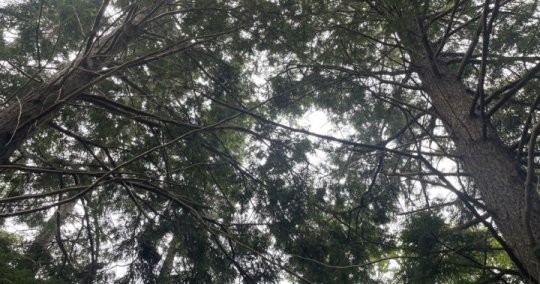
View On WordPress
0 notes
Text
Mysterious, Mortal Bug Unveiled: Discover the Threat to Hemlock Trees in Halifax!
Halifax Region Confirmed to Have Hemlock Woolly Adelgid Infestation for the First Time The Halifax region has recently confirmed the presence of the Hemlock Woolly Adelgid (HWA), an invasive insect species that poses a significant threat to hemlock trees. Ron Neville, a representative from the Canadian Food Inspection Agency (CFIA), described the HWA as an insect that attacks the base of tree…

View On WordPress
0 notes
Text
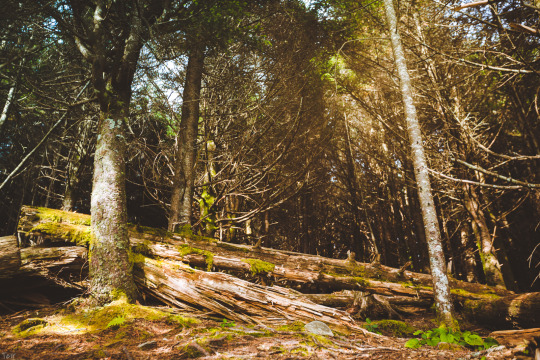



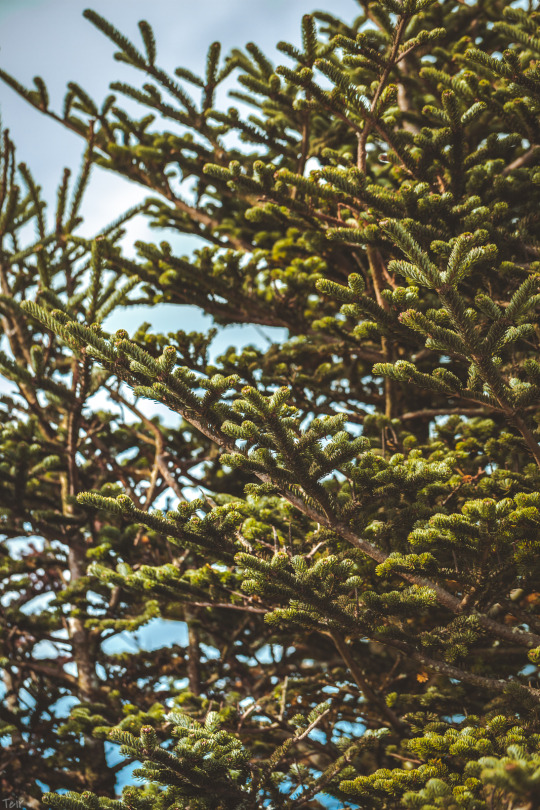
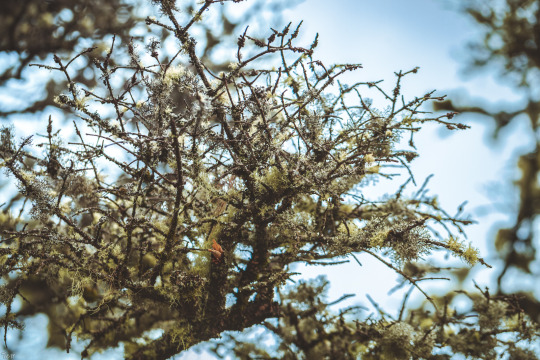
The road to Clingmans Dome is closed seasonally (for the winter months), so we weren't able to visit when we were in the area in February. Not the case this time though.
I was much more fascinated with the unique flora to the area than the views, to be completely honest. The highest elevations around the Smokies are spruce-fir forest, predominantly red spruce and Fraser fir, the latter of which is endangered and is being destroyed by the invasive balsam woolly adelgid. These are considered coniferous rainforests, and the biodiversity is incredibly rich. Ice age climates pushed boreal species much further south than their usual range, and a lot of them persisted in these higher elevations. A neat current example, which I did not know until I saw an absolute shit ton of them, are dark-eyed juncos. They appear in the backyard here in north AL to overwinter, and spend their summers far north in Canada and up into the arctic. They live year-round through the peaks of the Appalachians though! They were a friendly surprise.
Conservation efforts for the Fraser fir and other at-risk flora are making progress at slowing the damage, but the sheer amount of dead snags hurts to look at. Some of them harbored some pretty incredible moss and lichen growth though.
Hemlocks are also being effected by the hemlock woolly adelgid, which is a problem we're dealing with in north AL as well. I believe the land trust just had a meeting about it recently. Within our lifetime though, we may no longer have eastern hemlock here.
#photography#my photography#nature#Clingmans Dome#coniferous rainforest#forest#autumn#fall#red spruce#fraser fir
16 notes
·
View notes
Text
Mysterious, Mortal Bug Unveiled: Discover the Threat to Hemlock Trees in Halifax!
Halifax Region Confirmed to Have Hemlock Woolly Adelgid Infestation for the First Time The Halifax region has recently confirmed the presence of the Hemlock Woolly Adelgid (HWA), an invasive insect species that poses a significant threat to hemlock trees. Ron Neville, a representative from the Canadian Food Inspection Agency (CFIA), described the HWA as an insect that attacks the base of tree…

View On WordPress
0 notes